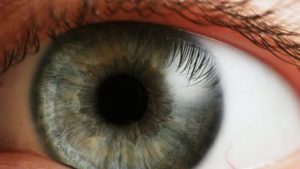The US Patent and Trademark Office has published an Apple patent application that details an eye-tracking system for a device with a Head Mounted Display (HMD). The patent was initially filed in the first quarter of 2020, although it incorporates technologies described in another patent that was filed in 2017.

The new system utilizes a series of light emitters built into the device to figure out what a person is looking at. The emitters send light into the user’s eye, and then the HMD uses a camera to detect the reflected light as it returns. That information allows the device to determine the position and the focus of the eye itself.
The system adjusts the level of light based on the user’s biometrics. If the person wearing the device has an elevated heart rate, or is otherwise blinking more than would normally be expected, the device will lower the intensity of the light emitters to protect that person’s eye. It would also lower the intensity if the wearer is a child.
The new technology is intended for use in augmented and virtual reality headsets. With eye-tracking, people would be able to stare at a specific menu item to select it, allowing them to navigate the screen and perform other actions without the need for more traditional inputs.
The patent is one of several Apple patents that addresses some kind of eye-tracking technology. For example, one patent describes a system that would combine eye-tracking with facial recognition to improve the performance of Apple’s Face ID authentication system, while another will automatically blur out areas of the screen that are not being looked at to protect sensitive information from anyone who might be trying to read over the user’s shoulder. The latter system would also use facial recognition to verify the identity of the approved user.
Source: Patently Apple

Follow Us